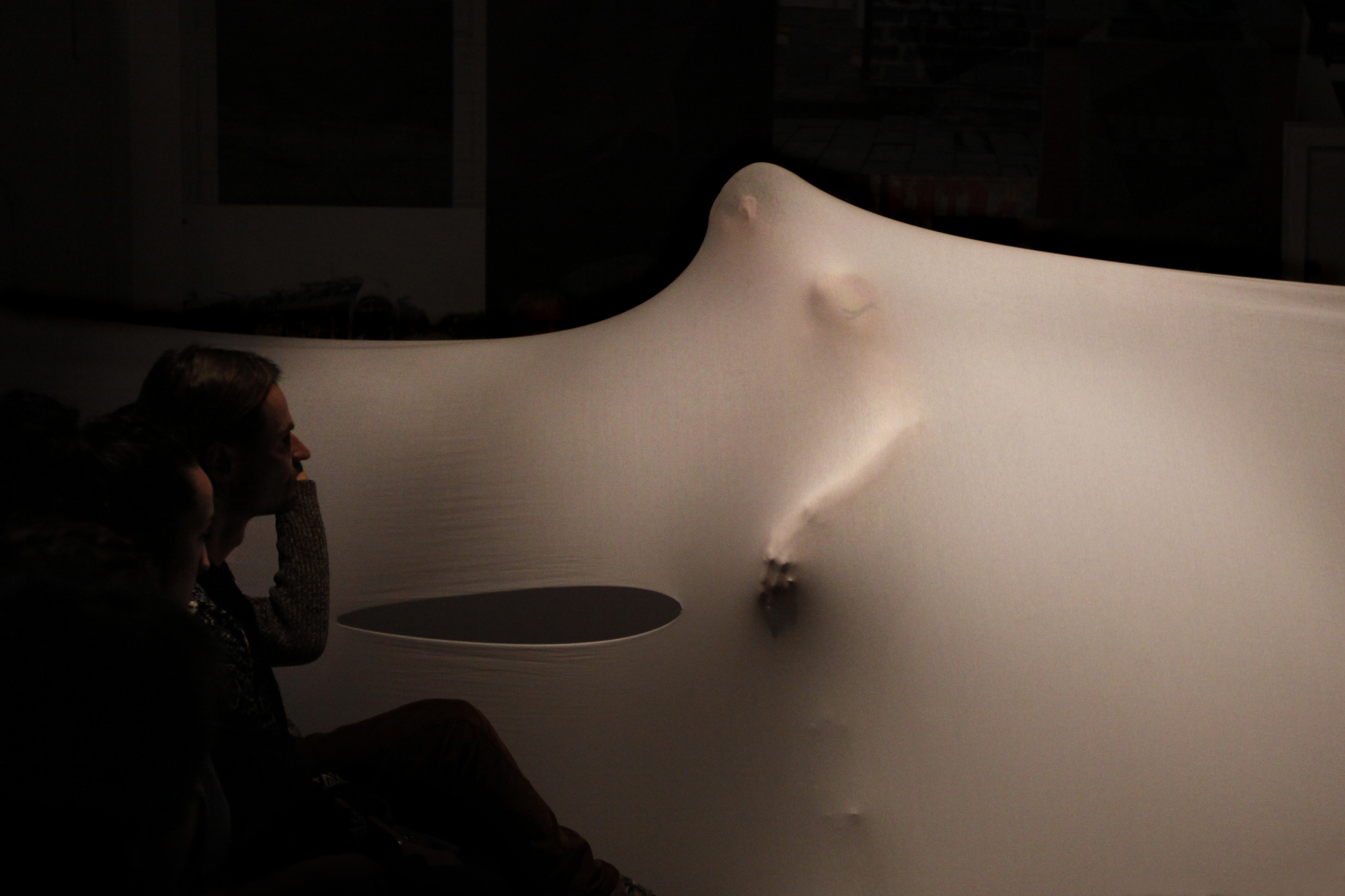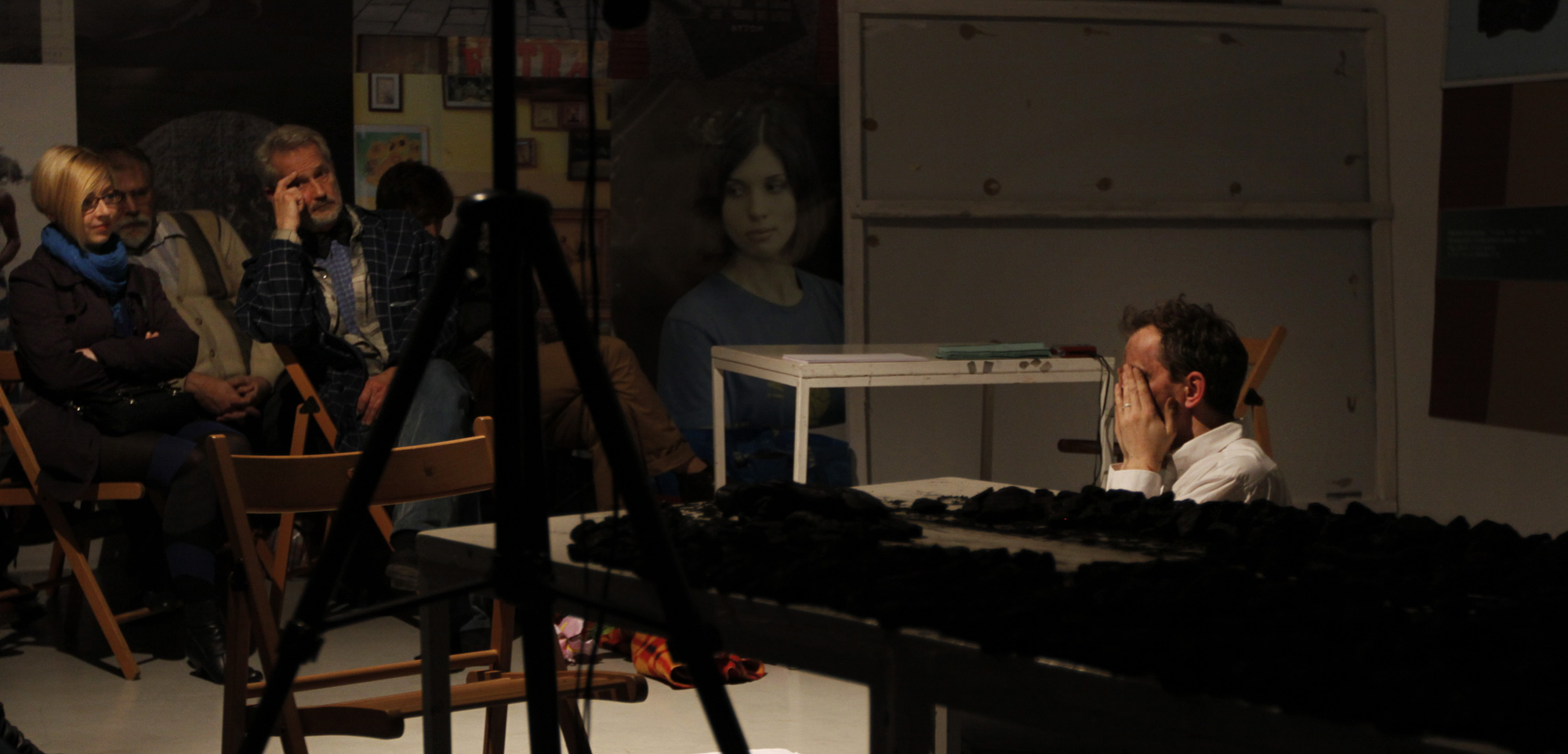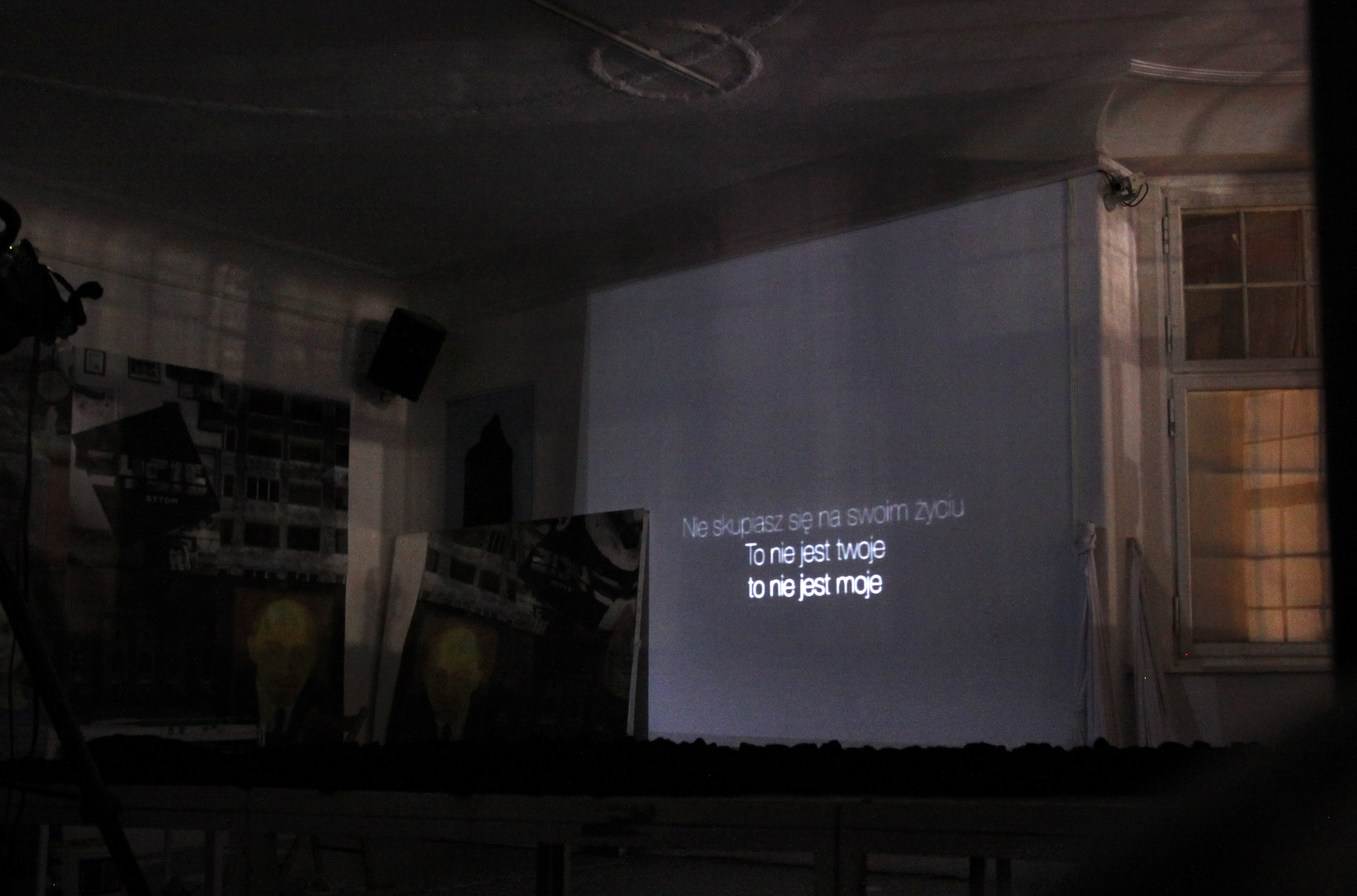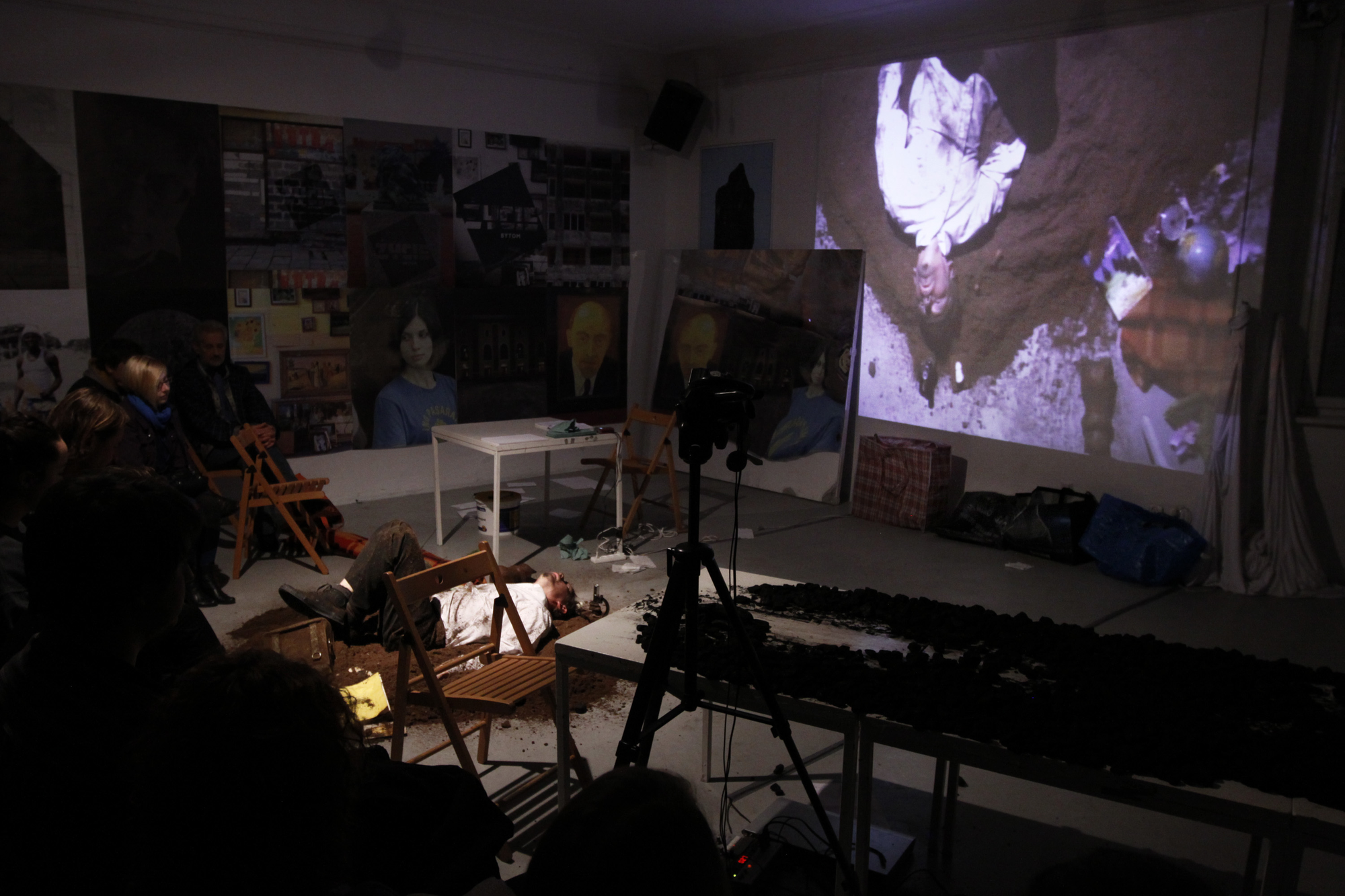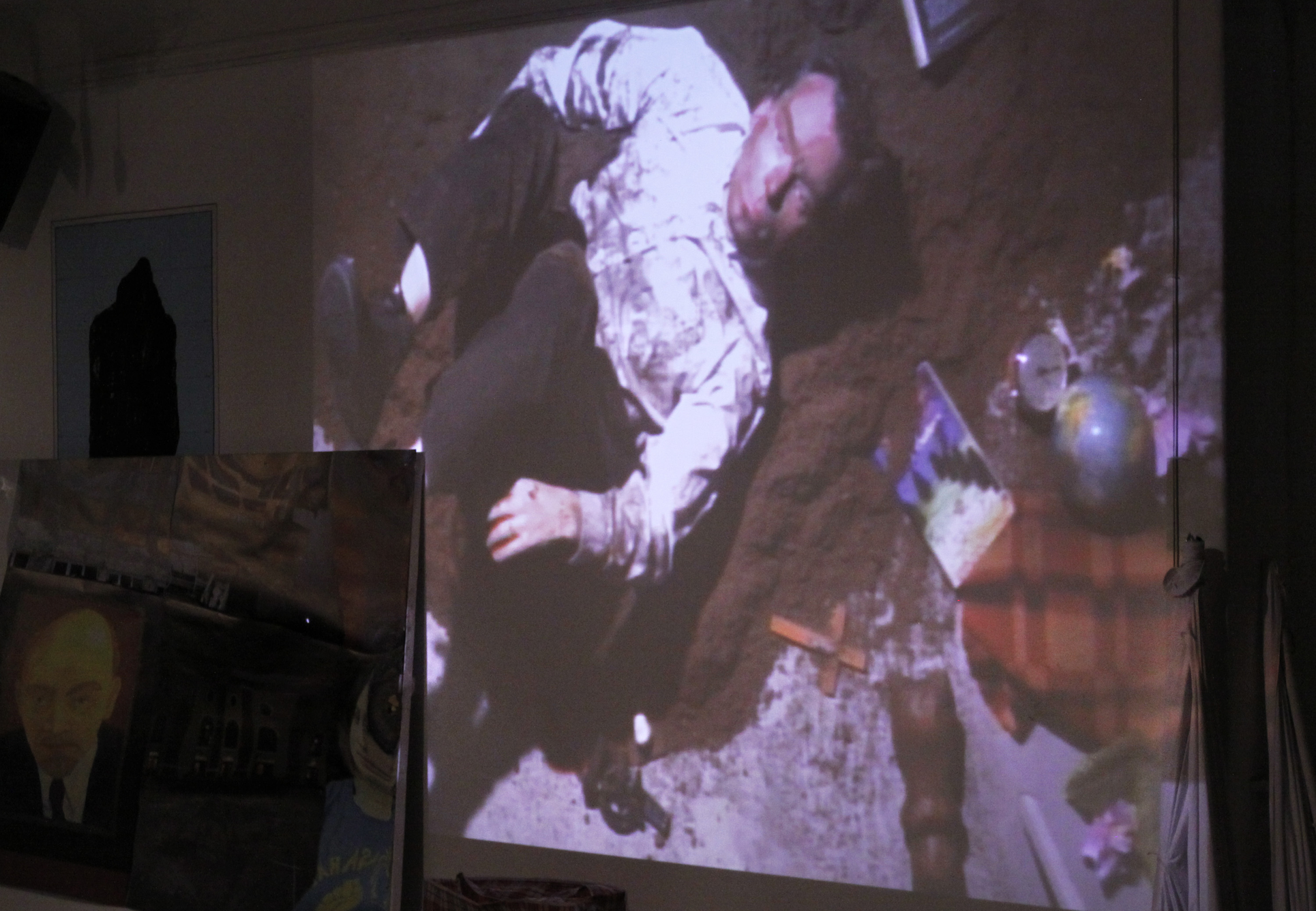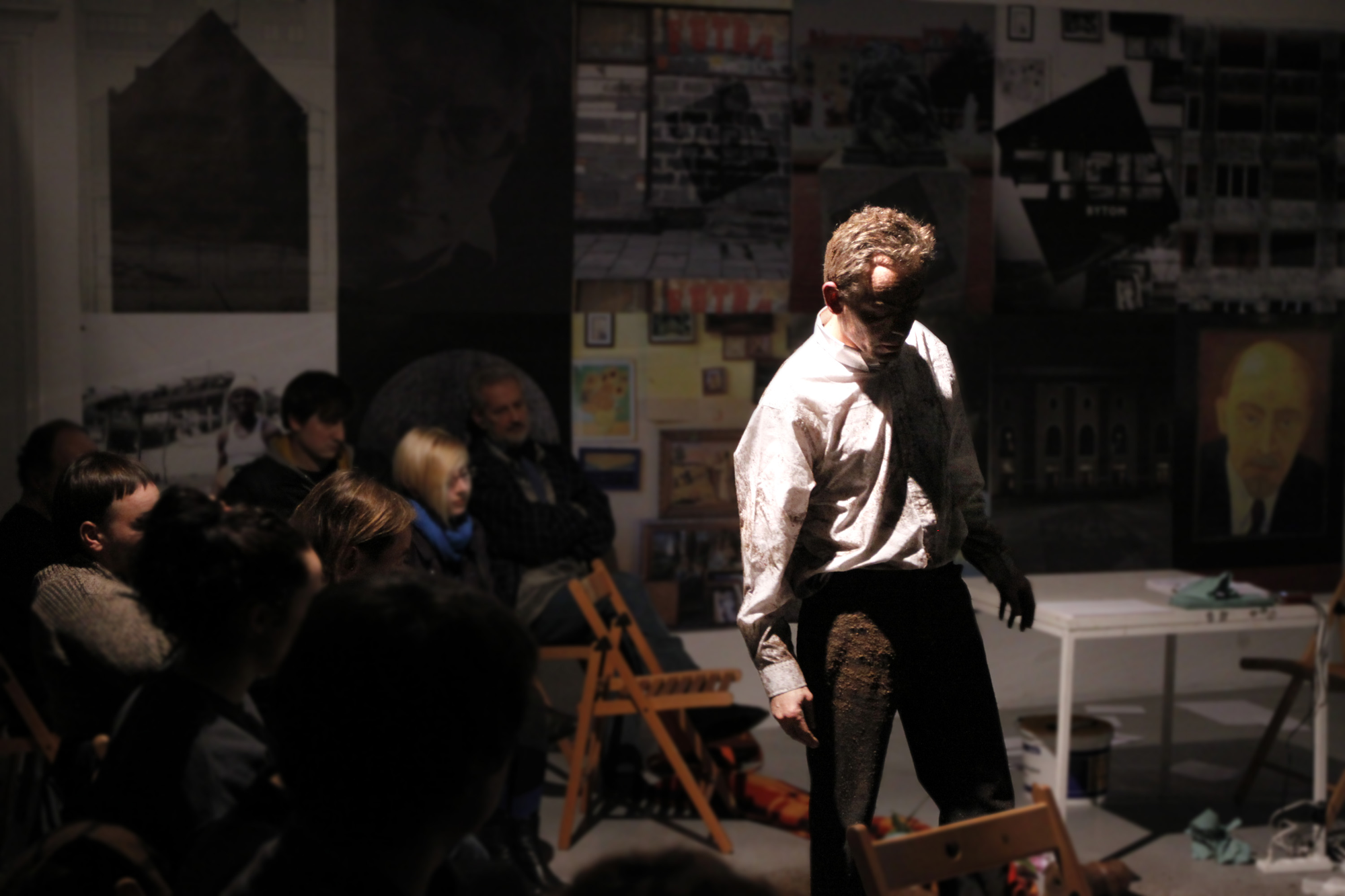In the structuration of the work I used some methods by Georges Perec (1978/1987) and Raymond Queneau (1947/1981) from the French literary group OuLiPo (Mathews 1998). My original idea for the structure was to follow the basic grid, or Graeco-Latin bi-square used by Perec in his book Life: A User’s Manual and to produce ninety-nine micro-scenes accordingly.16 However, after being able to produce around hundred micro-scenes or ‘seeds’ from the material gathered, they were put together in order to make ten scenes, altogether.17 These seeds were part of the written script of the performance Life in Bytom, and to be found behind the imagery used in posters and in the video Wywrotka / Capsizing. Similar to Perec’s writing method, other works of art or from popular culture were quoted or paraphrased in the works. For example a glass on the table is a cue or a quote from Spalding Gray’s performance, and functions as an affect, which guides the action in a specific direction. In other words the performance is inhabited with these refrains, cues and ‘seeds’.
Another method, which was not so successful, was to invite participants to write diaries.18 My take on this was to ask people to write diary and describe a day in their life with a device. I asked them to choose an object, machine or device, which was used every day, and to write about how this device connects with other people or communities. This is similar to how machines and devices were approached in my Tell Me About Your Machines at the New Performance Event in Turku, 2012. My unfinished plan was to leave this kind of instructions in public places such as kiosks, second hand shops, cafés and so on. However, this did not seem to work, therefore the best way to collect material was still in direct interview format, and not by writing diaries.
Literary devices used by OuLiPo were turned into aleatory instruments of annihilation and failure – the shadows of a performer. In an aleatory structure the potentiality of annihilation is present. This is very clear in Life: A User’s Manual where death and destruction, namely the erasure of images in a puzzle, are present. In a previous work, the nine-day process of performing in the MUU gallery, often without audience but rigorously following a strict structure, my performance invited the presence of the shadow into the game. Why continue, when there is no audience, or when there is never any gratification of success, or fixed plasticity in this sort of performances? In the schizoanalytic performance practice in the Life in Bytom, it is not a question of why, but how to go on, and whilst this action goes on, each halt and movement fluctuates with the presence of blunder, annihilation, amnesia and negativity.
16 ”Graeco-Latin bi-square. This mathematical term, also known as an orthogonal bi-square, has attained a certain literary currency thanks to Georges Perec's us of a 10 x 10 bi-square in organising his novel Life A User's Manual.” (Matthews, Brotchie and Queneau 1998, 154) Perec describes the use of the bi-square in the following way: “So I decided to use a principle derived from an old problem well known to chess enthusiasts as the Knight's tour; it requires moving a knight around the 64 squares of a chess-board without its ever landing more than once on the same square [...] For the special case of Life A User's Manual, a solution for a 10 x 10 chess-board had to be found [...] The division of the book into six parts was derived from the same principle: each time the knight has finished touching all four sides of the square, a new section begins.” (Ibid.,172)
17 Such seeds would be such as: “The day the house collapsed”, “Bytom gone down for 9 meters in about 20 years”, “Zapiekanki from the hole-in-the-wall kiosk by the Plac Sobieski”, “Karin Stanek Square”, “Bobrek is hell. Karb is almost hell”, “Cinema theatre in ruins by the square. What was the last film shown?”, or “Road to Katowice (number) is the way for more fun (more divine)”.
18 British sociology group Mass Observation used this method successfully over the decades since 1937. See for instance: ”Mass Observation: Two letters and ’they speak for themselves’ [1936-7],” in The Everyday Reader, edited by Ben Highmore.
